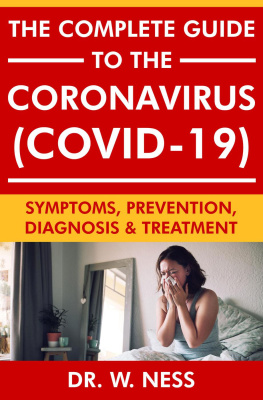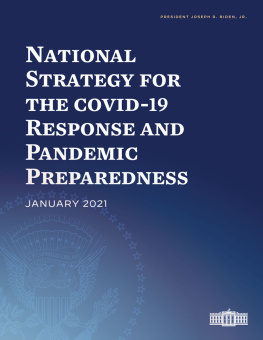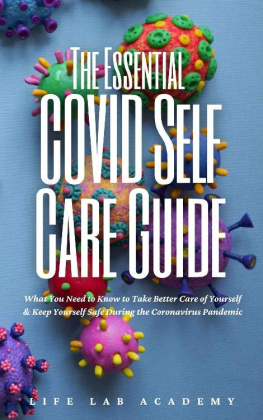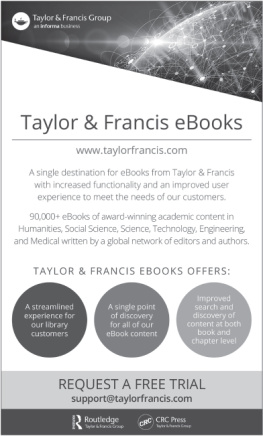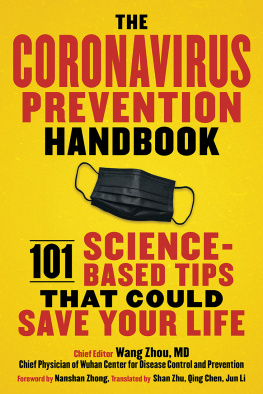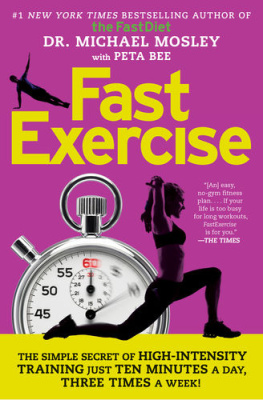Tess Pennington - The Coronavirus Preparedness Handbook: How to Protect Your Home, School, Workplace, and Community from a Deadly Pandemic (Covid-19)
Here you can read online Tess Pennington - The Coronavirus Preparedness Handbook: How to Protect Your Home, School, Workplace, and Community from a Deadly Pandemic (Covid-19) full text of the book (entire story) in english for free. Download pdf and epub, get meaning, cover and reviews about this ebook. year: 2020, publisher: Skyhorse, genre: Romance novel. Description of the work, (preface) as well as reviews are available. Best literature library LitArk.com created for fans of good reading and offers a wide selection of genres:
Romance novel
Science fiction
Adventure
Detective
Science
History
Home and family
Prose
Art
Politics
Computer
Non-fiction
Religion
Business
Children
Humor
Choose a favorite category and find really read worthwhile books. Enjoy immersion in the world of imagination, feel the emotions of the characters or learn something new for yourself, make an fascinating discovery.
- Book:The Coronavirus Preparedness Handbook: How to Protect Your Home, School, Workplace, and Community from a Deadly Pandemic (Covid-19)
- Author:
- Publisher:Skyhorse
- Genre:
- Year:2020
- Rating:3 / 5
- Favourites:Add to favourites
- Your mark:
- 60
- 1
- 2
- 3
- 4
- 5
The Coronavirus Preparedness Handbook: How to Protect Your Home, School, Workplace, and Community from a Deadly Pandemic (Covid-19): summary, description and annotation
We offer to read an annotation, description, summary or preface (depends on what the author of the book "The Coronavirus Preparedness Handbook: How to Protect Your Home, School, Workplace, and Community from a Deadly Pandemic (Covid-19)" wrote himself). If you haven't found the necessary information about the book — write in the comments, we will try to find it.
Tess Pennington: author's other books
Who wrote The Coronavirus Preparedness Handbook: How to Protect Your Home, School, Workplace, and Community from a Deadly Pandemic (Covid-19)? Find out the surname, the name of the author of the book and a list of all author's works by series.
The Coronavirus Preparedness Handbook: How to Protect Your Home, School, Workplace, and Community from a Deadly Pandemic (Covid-19) — read online for free the complete book (whole text) full work
Below is the text of the book, divided by pages. System saving the place of the last page read, allows you to conveniently read the book "The Coronavirus Preparedness Handbook: How to Protect Your Home, School, Workplace, and Community from a Deadly Pandemic (Covid-19)" online for free, without having to search again every time where you left off. Put a bookmark, and you can go to the page where you finished reading at any time.
Font size:
Interval:
Bookmark:


The information provided in this book is designed to provide helpful information on the subjects discussed. This book is not meant to be used, nor should it be used, to diagnose or treat andy medical condition. For diagnosis or treatment of any medical problem, consult your own physician. The publisher and author are not responsible for any specific health or allergy needs that may require medical supervision and are not liable for any damages or negative consequences from any treatment, action, application or preparation, to any person reading or following the information in this book. References are provided for informational purposes only and do not consitute endorsement of any websites or other sources. Readers should be aware that the websites listed in this book may change.
Copyright 2020 by Tess Pennington
Bill Gates article on page 213 First published in The New England Journal of Medicine, Feb 28, 2020
Copyright 2020, Massachusetts Medical Society, reprinted with permission
All rights reserved. No part of this book may be reproduced in any manner without the express written consent of the publisher, except in the case of brief excerpts in critical reviews or articles. All inquiries should be addressed to Skyhorse Publishing, 307 West 36th Street, 11th Floor, New York, NY 10018.
Skyhorse Publishing books may be purchased in bulk at special discounts for sales promotion, corporate gifts, fund-raising, or educational purposes. Special editions can also be created to specifications. For details, contact the Special Sales Department, Skyhorse Publishing, 307 West 36th Street, 11th Floor, New York, NY 10018 or .
Skyhorse and Skyhorse Publishing are registered trademarks of Skyhorse Publishing, Inc., a Delaware corporation.
Visit our website at www.skyhorsepublishing.com.
10 9 8 7 6 5 4 3 2 1
Library of Congress Cataloging-in-Publication Data is available on file.
Cover design by Mona Lin
Cover images: HardtIllustrations/Shutterstock.com and Getty Images
Print ISBN: 978-1-5107-6251-0
Printed in the United States of America
Contents
Responding to COVID-19 A Once-in-a-Century Pandemic?
By Bill Gates
First published in The New England Journal of Medicine, Feb 28, 2020 Copyright 2020, Massachusetts Medical Society, reprinted with permission
In any crisis, leaders have two equally important responsibilities: solve the immediate problem and keep it from happening again. The Covid-19 pandemic is a case in point. We need to save lives now while also improving the way we respond to outbreaks in general. The first point is more pressing, but the second has crucial long-term consequences.
The long-term challenge improving our ability to respond to outbreaks isnt new. Global health experts have been saying for years that another pandemic whose speed and severity rivaled those of the 1918 influenza epidemic was a matter not of if but of when. The Bill and Melinda Gates Foundation has committed substantial resources in recent years to helping the world prepare for such a scenario.
Now we also face an immediate crisis. In the past week, Covid-19 has started behaving a lot like the once-in-a-century pathogen weve been worried about. I hope its not that bad, but we should assume it will be until we know otherwise.
There are two reasons that Covid-19 is such a threat. First, it can kill healthy adults in addition to elderly people with existing health problems. The data so far suggest that the virus has a case fatality risk around 1%; this rate would make it many times more severe than typical seasonal influenza, putting it somewhere between the 1957 influenza pandemic (0.6%) and the 1918 influenza pandemic (2%).
Second, Covid-19 is transmitted quite efficiently. The average infected person spreads the disease to two or three others an exponential rate of increase. There is also strong evidence that it can be transmitted by people who are just mildly ill or even presymptomatic. That means Covid-19 will be much harder to contain than the Middle East respiratory syndrome or severe acute respiratory syndrome (SARS), which were spread much less efficiently and only by symptomatic people. In fact, Covid-19 has already caused 10 times as many cases as SARS in a quarter of the time.
National, state, and local governments and public health agencies can take steps over the next few weeks to slow the viruss spread. For example, in addition to helping their own citizens respond, donor governments can help low- and middle-income countries (LMICs) prepare for this pandemic. Many LMIC health systems are already stretched thin, and a pathogen like the coronavirus can quickly overwhelm them. And poorer countries have little political or economic leverage, given wealthier countries natural desire to put their own people first.
By helping African and South Asian countries get ready now, we can save lives and slow the global circulation of the virus. (A substantial portion of the commitment Melinda and I recently made to help kickstart the global response to Covid-19 which could total up to $100 million is focused on LMICs.)
The world also needs to accelerate work on treatments and vaccines for Covid-19. Scientists sequenced the genome of the virus and developed several promising vaccine candidates in a matter of days, and the Coalition for Epidemic Preparedness Innovations is already preparing up to eight promising vaccine candidates for clinical trials. If some of these vaccines prove safe and effective in animal models, they could be ready for larger-scale trials as early as June. Drug discovery can also be accelerated by drawing on libraries of compounds that have already been tested for safety and by applying new screening techniques, including machine learning, to identify antivirals that could be ready for large-scale clinical trials within weeks.
All these steps would help address the current crisis. But we also need to make larger systemic changes so we can respond more efficiently and effectively when the next epidemic arrives.
Its essential to help LMICs strengthen their primary health care systems. When you build a health clinic, youre also creating part of the infrastructure for fighting epidemics. Trained health care workers not only deliver vaccines; they can also monitor disease patterns, serving as part of the early warning systems that alert the world to potential outbreaks.
We also need to invest in disease surveillance, including a case database that is instantly accessible to relevant organizations, and rules requiring countries to share information. Governments should have access to lists of trained personnel, from local leaders to global experts, who are prepared to deal with an epidemic immediately, as well as lists of supplies to be stockpiled or redirected in an emergency.
In addition, we need to build a system that can develop safe, effective vaccines and antivirals, get them approved, and deliver billions of doses within a few months after the discovery of a fast-moving pathogen. Thats a tough challenge that presents technical, diplomatic, and budgetary obstacles, as well as demanding partnership between the public and private sectors. But all these obstacles can be overcome.
One of the main technical challenges for vaccines is to improve on the old ways of manufacturing proteins, which are too slow for responding to an epidemic. We need to develop platforms that are predictably safe, so regulatory reviews can happen quickly, and that make it easy for manufacturers to produce doses at low cost on a massive scale. For antivirals, we need an organized system to screen existing treatments and candidate molecules in a swift and standardized manner.
Next pageFont size:
Interval:
Bookmark:
Similar books «The Coronavirus Preparedness Handbook: How to Protect Your Home, School, Workplace, and Community from a Deadly Pandemic (Covid-19)»
Look at similar books to The Coronavirus Preparedness Handbook: How to Protect Your Home, School, Workplace, and Community from a Deadly Pandemic (Covid-19). We have selected literature similar in name and meaning in the hope of providing readers with more options to find new, interesting, not yet read works.
Discussion, reviews of the book The Coronavirus Preparedness Handbook: How to Protect Your Home, School, Workplace, and Community from a Deadly Pandemic (Covid-19) and just readers' own opinions. Leave your comments, write what you think about the work, its meaning or the main characters. Specify what exactly you liked and what you didn't like, and why you think so.




